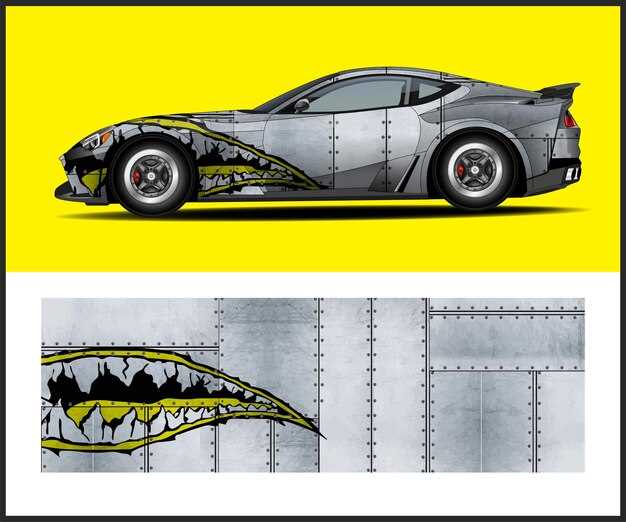
The rivalry between the Chevrolet Camaro and the Dodge Challenger is a cornerstone of American automotive culture, showcasing not just performance but also distinctive design philosophies. Both cars have roots steeped in muscle car legacy, yet they present two very different interpretations of what a modern muscle car should embody. While the Camaro boasts a sleek, aggressive silhouette that speaks to aerodynamics and modern styling trends, the Challenger embraces a more retro flair, celebrating its heritage with bold lines and a commanding road presence.
In this design battle, we take a closer look at the unique design elements of each vehicle. The Camaro’s profile is characterized by sharp angles and a low stance, exuding an athletic demeanor that appeals to performance enthusiasts. In contrast, the Challenger’s broader stance and vintage-inspired aesthetics pay homage to the muscle car era of the 1970s, resonating with nostalgia while still offering modern performance capabilities. This clash of styles not only reflects the choices of engineers and designers but also reveals the preferences of their passionate fanbases.
Ultimately, the debate between Camaro and Challenger is not just about horsepower and acceleration; it is a dialogue between innovation and tradition. As we delve deeper into their design components, we will uncover how each manufacturer’s vision shapes their iconic muscle cars, leaving a lasting impact on both the road and on car enthusiasts around the globe.
Exterior Styling: Camaro’s Aerodynamics vs Challenger’s Retro Appeal
The exterior styling of the Camaro and Challenger represents two distinct philosophies in muscle car design. The Chevrolet Camaro is engineered with modern aerodynamics in mind, featuring a sleek silhouette that enhances its performance capabilities. Sharp edges and aggressive lines are strategically placed to reduce drag and improve stability at high speeds. The low profile and elongated hood contribute to its sporty demeanor, while the wide stance emphasizes its muscular characteristics, creating an image of power and agility.
In contrast, the Dodge Challenger pays homage to classic muscle car aesthetics, embracing a retro appeal that harks back to the golden era of American performance vehicles. Its boxy shape and curvy contours evoke nostalgia, reflecting the design language popular in the 1970s. The Challenger’s robust front grille and bold rear fenders give it a commanding presence on the road, while the overall design prioritizes a sense of tradition over cutting-edge aerodynamics.
While the Camaro’s design focuses on functionality and efficiency, optimizing airflow around the vehicle, the Challenger revels in its vintage charm, appealing to enthusiasts seeking a connection to the past. The Camaro’s refined exterior allows it to slice through the air with ease, enhancing performance on the track. Meanwhile, the Challenger stands out with its iconic styling, drawing attention with its bold colors and classic muscle car silhouette.
Ultimately, the choice between the Camaro and Challenger’s exterior styling hinges on personal preference. The Camaro is for those who appreciate modern engineering and performance-driven design, while the Challenger attracts those who value nostalgia and the timeless appeal of classic American muscle. Each vehicle presents a unique character that resonates with different segments of the automotive market, ensuring that both have dedicated followings among enthusiasts.
Interior Features: Comfort and Technology Comparison in Camaro and Challenger

The interior of the Chevrolet Camaro focuses on a driver-centric layout, emphasizing a sporty atmosphere combined with technological advancements. The cockpit-style design places controls within easy reach, ensuring that the driver can maintain focus on performance. High-quality materials and available leather upholstery contribute to a sense of sophistication. Key technology features include an intuitive infotainment system with a responsive touchscreen, Apple CarPlay, and Android Auto integration, allowing seamless smartphone connectivity. The available premium sound system enhances the driving experience, providing clear audio quality.
In contrast, the Dodge Challenger adopts a more classic muscle car vibe with a spacious cabin that often accommodates larger individuals comfortably. The layout is more traditional compared to the Camaro, featuring a straightforward dashboard with easily accessible controls. The Challenger also boasts an impressive array of technology, including a larger infotainment touchscreen option, customizable ambient lighting, and an advanced audio system tailored to any audiophile’s needs. Furthermore, the interior dimensions provide ample legroom and headroom for both front and rear passengers, making it a more family-friendly option.
When it comes to comfort, the Camaro’s sport seats are designed to offer excellent support during spirited driving, while still providing enough cushioning for everyday use. However, the Challenger stands out with its more spacious seating arrangement, making long drives less fatiguing for all occupants. Additionally, the availability of ventilated and heated seats in both models enhances comfort levels, especially in varying weather conditions.
Ultimately, the choice between the Camaro and Challenger’s interior features will largely depend on personal preferences regarding space and functionality. The Camaro leans towards a modern sporting experience with cutting-edge technology, whereas the Challenger emphasizes classic muscle car comfort with a more spacious layout, making each vehicle appealing to different types of drivers.
Color Options and Customization: Personalizing Your Muscle Car Experience

When it comes to muscle cars, the Camaro and Challenger stand out not just for their performance, but also for their extensive customization options. Personalization begins with choosing the right color, and both vehicles offer a spectrum of stunning finishes that cater to individual tastes.
The Camaro features a myriad of color choices, ranging from classic hues like Inferno Orange and Summit White to more daring options like Shock Yellow or Riverside Blue. Each color has been meticulously designed to enhance the Camaro’s aggressive aesthetics and highlight its sporty lines.
Additionally, Chevrolet provides a range of graphic packages and stripe options that can further accentuate the Camaro‘s body. This means that enthusiasts can choose not only the body color but also how to embellish their vehicle, allowing for a unique expression of style and personality.
On the other hand, the Challenger impresses with its color palette as well, offering iconic shades such as Plum Crazy and Hemi Orange. These vibrant colors are often reminiscent of the golden era of muscle cars, invoking nostalgia while still appealing to modern drivers. Each color option is designed to reflect the powerful stance and heritage of the Challenger.
Both the Camaro and Challenger also allow for interior customization, giving buyers the opportunity to choose materials, stitching, and trim finishes that match their exterior selections. Options like leather upholstery, carbon fiber accents, and contrasting stitching provide an additional layer of personalization that enhances the driving experience.
Ultimately, whether you lean towards the Camaro‘s sleek lines or the Challenger’s bold presence, the color options and customization aspects play a pivotal role in making a muscle car truly yours. The ability to choose elements that resonate with personal style not only enhances the ownership experience but also the pride that comes with driving an iconic American muscle car.



